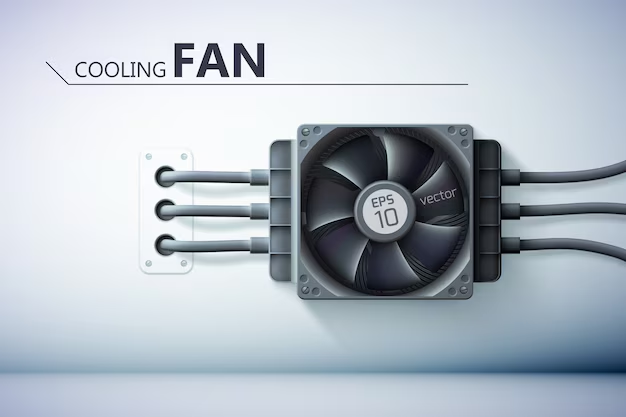Introduction
Your CPU is the brain of your computer, and just like any other electronic component, it generates heat while running. But What temperature is too hot for cpu? Overheating can cause performance issues, system crashes, and even permanent hardware damage. Understanding safe temperature ranges and recognizing warning signs can help you prevent costly repairs and ensure your CPU runs smoothly. In this guide, we’ll explore the ideal CPU temperature, what happens when it gets too hot, and how to keep it cool for optimal performance.
Why CPU Temperature Matters
Your CPU is the powerhouse of your computer, generating heat as it processes tasks. Consistently high temperatures can lead to permanent hardware damage, sluggish performance, and unexpected crashes. Knowing the safe temperature range for your CPU isn’t just technical jargon—it’s essential for extending your computer’s lifespan.
Safe CPU Temperature Ranges Explained
CPUs operate within specific thermal limits. Here’s a breakdown of healthy temperature zones:
- Idle (No Active Tasks):
- 30–40°C (86–104°F): Ideal for minimal activity.
- Moderate Use (Web Browsing, Office Work):
- 40–60°C (104–140°F): Safe for everyday tasks.
- Heavy Workloads (Gaming, Video Editing):
- 60–80°C (140–176°F): Normal under stress but requires monitoring.
Danger Zones:
- 80–90°C (176–194°F): Risk of thermal throttling; address cooling immediately.
- Above 90°C (194°F): Critical danger—shut down your PC to avoid hardware failure.
Top Causes of CPU Overheating
Identify and resolve these common culprits:
- Inadequate Cooling: Stock coolers often struggle with high-performance tasks.
- Poor Airflow: Cluttered cases or faulty fans trap heat.
- Dust Accumulation: Dust blocks vents and insulates components.
- Degraded Thermal Paste: Dried or uneven paste reduces heat transfer.
- Overclocking: Pushing your CPU beyond factory settings increases heat output.
- Ambient Temperature: Hot environments strain cooling systems.
Warning Signs Your CPU Is Overheating
Watch for these red flags:
- Sudden Performance Drops: Thermal throttling slows your system.
- Frequent Crashes/Freezes: Overheating triggers forced shutdowns.
- Loud Fan Noise: Fans working overtime signal cooling issues.
- Burning Smell or Hot Case: Physical heat indicates immediate danger.
How to Check CPU Temperature
Use these trusted tools for real-time monitoring:
- HWMonitor: Tracks temperatures, voltages, and fan speeds.
- Core Temp: Monitors individual core temperatures.
- Open Hardware Monitor: Open-source tool for detailed analytics.
- BIOS/UEFI: Check baseline temps before booting your OS.
7 Proven Strategies to Cool Your CPU
- Upgrade Your Cooler: Invest in a high-quality air or liquid cooler.
- Optimize Airflow: Rearrange case fans for intake/exhaust balance.
- Clean Regularly: Remove dust from fans, vents, and heatsinks every 3–6 months.
- Replace Thermal Paste: Apply a pea-sized drop of premium paste (e.g., Arctic MX-4).
- Avoid Overclocking: Revert to default clock speeds if temperatures spike.
- Use Cooling Pads (Laptops): Improve airflow for portable devices.
- Control Room Temperature: Keep your workspace cool with AC or fans.
FAQs: Quick Answers to CPU Temperature Concerns
Q: Is 85°C safe for gaming?
A: While some CPUs tolerate 85°C, sustained heat at this level risks long-term damage.
Q: Can overheating void my warranty?
A: Yes, if the manufacturer traces damage to poor thermal management.
Q: How often should I replace thermal paste?
A: Every 2–3 years, or if temperatures rise unexpectedly.
Q: Does liquid cooling outperform air cooling?
A: Liquid coolers excel in high-TDP scenarios (e.g., gaming PCs, workstations).
Q: Why does my CPU idle at 50°C?
A: Check for background apps, poor airflow, or outdated cooling hardware.
Final Tips to Protect Your CPU
- Monitor Consistently: Use tools like Core Temp for real-time alerts.
- Prioritize Maintenance: Clean your PC quarterly to prevent dust buildup.
- Invest in Quality Cooling: A robust cooler saves money on repairs.
By understanding what temperature is too hot for a CPU and acting proactively, you’ll ensure peak performance and avoid costly downtime.




